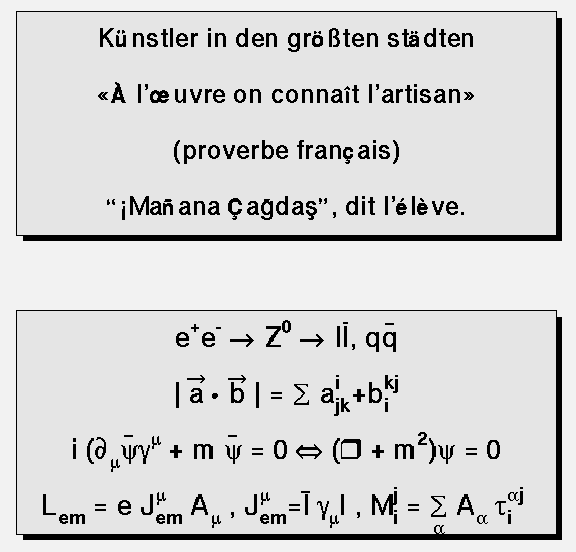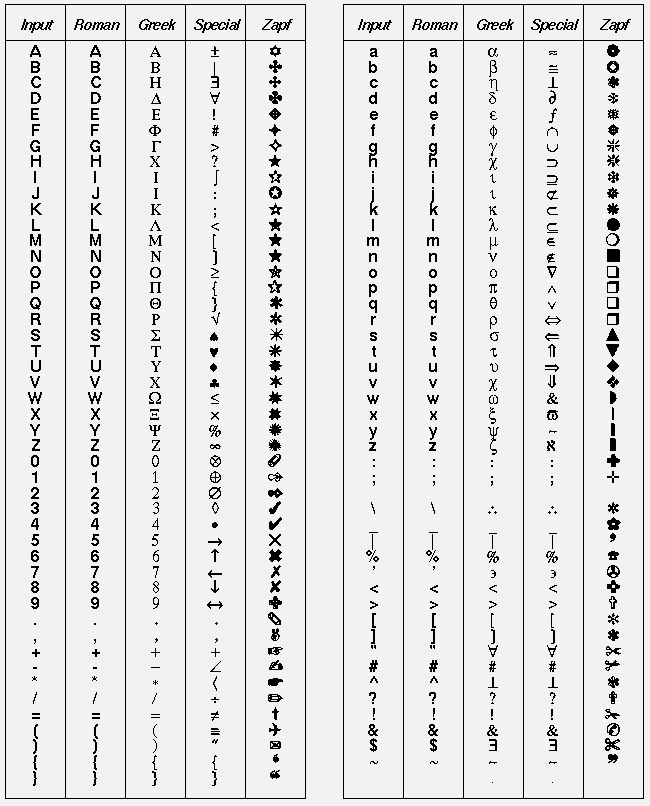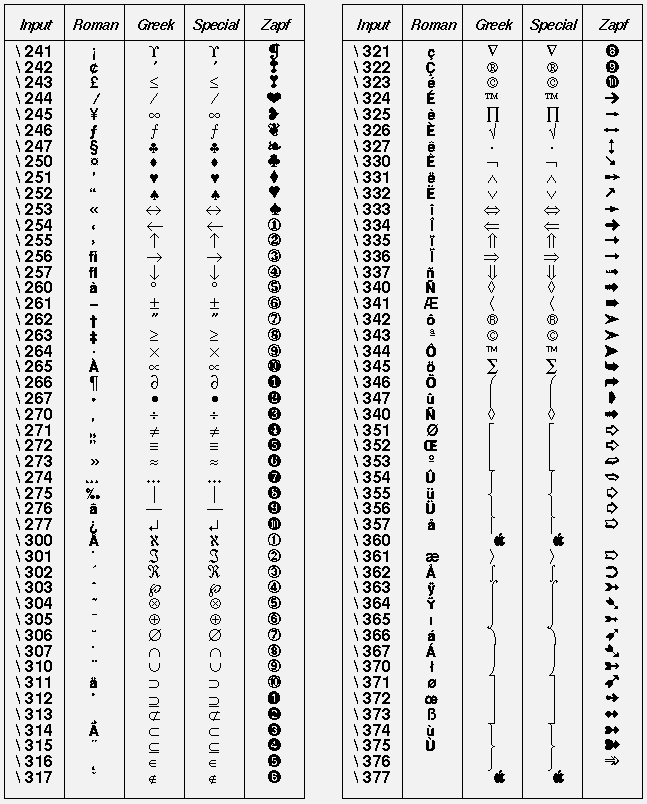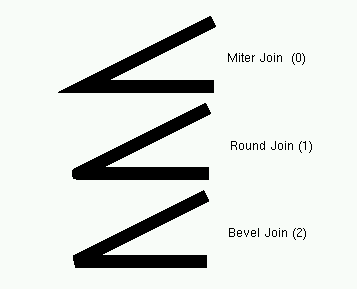| library: libPostscript #include "TPostScript.h" |
| Inheritance Chart: | |||||||||||||||||||||||||
|
public:
TPostScript()
TPostScript(const char* filename, Int_t type = -111)
TPostScript(const TPostScript&)
virtual ~TPostScript()
virtual void CellArrayBegin(Int_t W, Int_t H, Double_t x1, Double_t x2, Double_t y1, Double_t y2)
virtual void CellArrayEnd()
virtual void CellArrayFill(Int_t r, Int_t g, Int_t b)
static TClass* Class()
virtual void Close(Option_t* opt = "")
Int_t CMtoPS(Double_t u)
void DefineMarkers()
virtual void DrawBox(Double_t x1, Double_t y1, Double_t x2, Double_t y2)
virtual void DrawFrame(Double_t xl, Double_t yl, Double_t xt, Double_t yt, Int_t mode, Int_t border, Int_t dark, Int_t light)
void DrawHatch(Float_t dy, Float_t angle, Int_t n, Float_t* x, Float_t* y)
void DrawHatch(Float_t dy, Float_t angle, Int_t n, Double_t* x, Double_t* y)
void DrawPolyLine(Int_t n, TPoints* xy)
void DrawPolyLineNDC(Int_t n, TPoints* uv)
virtual void DrawPolyMarker(Int_t n, Float_t* x, Float_t* y)
virtual void DrawPolyMarker(Int_t n, Double_t* x, Double_t* y)
virtual void DrawPS(Int_t n, Float_t* xw, Float_t* yw)
virtual void DrawPS(Int_t n, Double_t* xw, Double_t* yw)
void FontEncode()
void Initialize()
virtual TClass* IsA() const
void MakeGreek()
void MovePS(Int_t x, Int_t y)
virtual void NewPage()
void Off()
void On()
virtual void Open(const char* filename, Int_t type = -111)
TPostScript& operator=(const TPostScript&)
void Range(Float_t xrange, Float_t yrange)
void SaveRestore(Int_t flag)
void SetColor(Int_t color = 1)
virtual void SetColor(Float_t r, Float_t g, Float_t b)
virtual void SetFillColor(Color_t cindex = 1)
void SetFillPatterns(Int_t ipat, Int_t color)
virtual void SetLineColor(Color_t cindex = 1)
void SetLineJoin(Int_t linejoin = 0)
void SetLineScale(Float_t scale = 3)
virtual void SetLineStyle(Style_t linestyle = 1)
virtual void SetLineWidth(Width_t linewidth = 1)
virtual void SetMarkerColor(Color_t cindex = 1)
virtual void SetTextColor(Color_t cindex = 1)
virtual void ShowMembers(TMemberInspector& insp, char* parent)
virtual void Streamer(TBuffer& b)
void StreamerNVirtual(TBuffer& b)
virtual void Text(Double_t x, Double_t y, const char* string)
void TextNDC(Double_t u, Double_t v, const char* string)
Int_t UtoPS(Double_t u)
Int_t VtoPS(Double_t v)
Int_t XtoPS(Double_t x)
Int_t YtoPS(Double_t y)
void Zone()
protected:
Float_t fX1v X bottom left corner of paper
Float_t fY1v Y bottom left corner of paper
Float_t fX2v X top right corner of paper
Float_t fY2v Y top right corner of paper
Float_t fX1w
Float_t fY1w
Float_t fX2w
Float_t fY2w
Float_t fDXC
Float_t fDYC
Float_t fXC
Float_t fYC
Float_t fFX
Float_t fFY
Float_t fXVP1
Float_t fXVP2
Float_t fYVP1
Float_t fYVP2
Float_t fXVS1
Float_t fXVS2
Float_t fYVS1
Float_t fYVS2
Float_t fXsize Page size along X
Float_t fYsize Page size along Y
Float_t fMaxsize Largest dimension of X and Y
Float_t fRed Per cent of red
Float_t fGreen Per cent of green
Float_t fBlue Per cent of blue
Float_t fLineScale Line width scale factor
Int_t fLineJoin Appearance of joining lines
Int_t fSave Number of gsave for restore
Int_t fNXzone Number of zones along X
Int_t fNYzone Number of zones along Y
Int_t fIXzone Current zone along X
Int_t fIYzone Current zone along Y
Float_t fMarkerSizeCur current transformed value of marker size
Int_t fCurrentColor current Postscript color index
Int_t fNpages number of pages
Int_t fType PostScript workstation type
Int_t fMode PostScript mode
Int_t fClip Clipping mode
Bool_t fBoundingBox True for Encapsulated PostScript
Bool_t fClear True when page must be cleared
Bool_t fClipStatus Clipping Indicator
Bool_t fRange True when a range has been defined
Bool_t fZone Zone indicator
char fPatterns[32] Indicate if pattern n is defined
Int_t fNbinCT Number of entries in the current Cell Array
Int_t fNbCellW Number of boxes per line
Int_t fNbCellLine Number of boxes in the current line
Int_t fMaxLines Maximum number of lines in a PS array
Int_t fLastCellRed Last red value
Int_t fLastCellGreen Last green value
Int_t fLastCellBlue Last blue value
Int_t fNBSameColorCell Number of boxes with the same color
static Int_t fgLineJoin Appearance of joining lines
TPostScript
Graphics interface to PostScript.
This code was initially developed in the context of HIGZ and PAW
by Olivier Couet and Pierre Juillot.
It has been converted to a C++ class by Rene Brun.
/*
To generate a Postscript (or encapsulated ps) file corresponding to a single image in a canvas, you can:
c1->Print("xxx.ps") or c1->Print("xxx.eps")
This will generate a file corresponding to the picture in the canvas
pointed by c1.
pad1->Print("xxx.ps")
prints only the picture in the pad pointed by pad1. The size
of the Postscript picture, by default, is computed to keep the aspect ratio
of the picture on the screen, where the size along x is always 20cm. You
can set the size of the PostScript picture before generating the picture
with a command such as:
TPostScript myps("myfile.ps",111)
myps.Range(xsize,ysize);
object->Draw();
myps.Close();
You can set the default paper size with:
gStyle->SetPaperSize(xsize,ysize);
You can resume writing again in this file with myps.Open();.
Note that you may have several Postscript files opened simultaneously.
Special characters
The following characters have a special action on the Postscript file:
` : go to Greek
' : go to special
~ : go to ZapfDingbats
? : go to subscript
^ : go to superscript
! : go to normal level of script
& : backspace one character
# : end of Greek or of ZapfDingbats
These special characters are printed as such on the screen.
To generate one of these characters on the Postscript file, you must escape it
with the escape character "@".
The use of these special characters is illustrated in several macros
referenced by the TPostScript constructor.
Output type
The output type allows to define how the PostScript output will looks like.
It allows to define the page format (A4, Legal etc..), the orientation
(Portrait, Landscape) and the number of images (zones) per page.
The output type has the following form:
[Format][Nx][Ny][Type]
Where:
The following macro is an example illustrating how to open a Postscript file and draw several pictures. The generation of a new Postscript page is automatic when TCanvas::Clear is called by object->Draw().
{
TFile f("hsimple.root");
TCanvas c1("c1","canvas",800,600);
// select postscript output type
// type = 111 portrait ps
// type = 112 landscape ps
// type = 113 eps
Int_t type = 111;
// create a postscript file and set the paper size
TPostScript ps("test.ps",type);
ps.Range(16,24); //set x,y of printed page
// draw 3 histograms from file hsimple.root on separate pages
hpx->Draw();
c1.Update(); //force drawing in a macro
hprof->Draw();
c1.Update();
hpx->Draw("lego1");
c1.Update();
ps.Close();
}
This example shows 2 pages. The canvas is divided. TPostScript::NewPage must be called before starting a new picture. object->Draw does not clear the canvas in this case because we clear only the pads and not the main canvas. Note that c1->Update must be called at the end of the first picture
{
TFile *f1 = new TFile("hsimple.root");
TCanvas *c1 = new TCanvas("c1");
TPostScript *ps = new TPostScript("file.ps",112);
c1->Divide(2,1);
// picture 1
ps->NewPage();
c1->cd(1);
hpx->Draw();
c1->cd(2);
hprof->Draw();
c1->Update();
// picture 2
ps->NewPage();
c1->cd(1);
hpxpy->Draw();
c1->cd(2);
ntuple->Draw("px");
c1->Update();
ps->Close();
// invoke Postscript viewer
gSystem->Exec("gs file.ps");
}
The picture below shows fancy text with national accents or subscripts and superscripts. This picture has been generated by the macropsexam.

The two following tables list the correspondence between the typed
character and its interpretation using the special characters given
in TPostScript::Text. These tables are screen copies. True and better
resolution PostScript files can be seen at
psexam, pstable1 and pstable2.
The macropstable
has been used to generate the two PostScript tables.


Default PostScript constructor
Initialize the PostScript interface
fname : PostScript file name
wtype : PostScript workstation type
The possible workstation types are:
111 ps Portrait
112 ps Landscape
113 eps
Open a PostScript file
Default PostScript destructor
Close a PostScript file
Activate an already open PostScript file
Deactivate an already open PostScript file
Draw a Cell Array
Drawing a PostScript Cell Array is in fact done thanks to three
procedures: CellArrayBegin, CellArrayFill, and CellArrayEnd.
CellArrayBegin: Initiate the Cell Array by writing the necessary
PostScript procedures and the initial values of the
required parameters. The input parameters are:
W: number of boxes along the width.
H: number of boxes along the height
x1,x2,y1,y2: First box coordinates.
CellArrayFill: Is called for each box of the Cell Array. The first
box is the top left one and the last box is the
bottom right one. The input parameters are the Red,
Green, and Blue components of the box colour. These
Levels are between 0 and 255.
CellArrayEnd: Finishes the Cell Array.
PostScript cannot handle arrays larger than 65535. So the Cell Array
is drawn in several pieces.
Define the markers
Draw a Box
Draw a Frame around a box mode = -1 box looks as it is behind the screen mode = 1 box looks as it is in front of the screen border is the border size in already precomputed PostScript units dark is the color for the dark part of the frame light is the color for the light part of the frame
Draw a PolyLine
Draw a polyline through the points xy.
If nn=1 moves only to point x,y.
If nn=0 the x,y are written in the PostScript file
according to the current transformation.
If nn>0 the line is clipped as a line.
If nn<0 the line is clipped as a fill area.
Draw a PolyLine in NDC space
Draw a polyline through the points xy.
If nn=1 moves only to point x,y.
If nn=0 the x,y are written in the PostScript file
according to the current transformation.
If nn>0 the line is clipped as a line.
If nn<0 the line is clipped as a fill area.
Draw markers at the n WC points x, y
Draw markers at the n WC points x, y
Draw a PolyLine
Draw a polyline through the points xw,yw.
If nn=1 moves only to point xw,yw.
If nn=0 the XW(1) and YW(1) are written in the PostScript file
according to the current NT.
If nn>0 the line is clipped as a line.
If nn<0 the line is clipped as a fill area.
Draw a PolyLine
Draw a polyline through the points xw,yw.
If nn=1 moves only to point xw,yw.
If nn=0 the xw(1) and YW(1) are written in the PostScript file
according to the current NT.
If nn>0 the line is clipped as a line.
If nn<0 the line is clipped as a fill area.
Draw Fill area with hatch styles
Draw Fill area with hatch styles
Font Reencoding
PostScript Initialisation This routine initialize the following PostScript procedures: +------------+------------------+-----------------------------------+ | Macro Name | Input parameters | Explanation | +------------+------------------+-----------------------------------+ | l | x y | Draw a line to the x y position | +------------+------------------+-----------------------------------+ | m | x y | Move to the position x y | +------------+------------------+-----------------------------------+ | box | dx dy x y | Define a box | +------------+------------------+-----------------------------------+ | bl | dx dy x y | Draw a line box | +------------+------------------+-----------------------------------+ | bf | dx dy x y | Draw a filled box | +------------+------------------+-----------------------------------+ | sw | text | Return string width of text | +------------+------------------+-----------------------------------+ | t | x y | Translate | +------------+------------------+-----------------------------------+ | r | angle | Rotate | +------------+------------------+-----------------------------------+ | rl | i j | Roll the stack | +------------+------------------+-----------------------------------+ | d | x y | Draw a relative line to x y | +------------+------------------+-----------------------------------+ | X | x | Draw a relative line to x (y=0) | +------------+------------------+-----------------------------------+ | Y | y | Draw a relative line to y (x=0) | +------------+------------------+-----------------------------------+ | rm | x y | Move relatively to x y | +------------+------------------+-----------------------------------+ | gr | | Restore the graphic context | +------------+------------------+-----------------------------------+ | lw | lwidth | Set line width to lwidth | +------------+------------------+-----------------------------------+ | sd | [] 0 | Set dash line define by [] | +------------+------------------+-----------------------------------+ | s | | Stroke mode | +------------+------------------+-----------------------------------+ | c | r g b | Set rgb color to r g b | +------------+------------------+-----------------------------------+ | cl | | Close path | +------------+------------------+-----------------------------------+ | f | | Fill the last describe path | +------------+------------------+-----------------------------------+ | mXX | x y | Draw the marker type XX at (x,y) | +------------+------------------+-----------------------------------+ | Zone | ix iy | Define the current zone | +------------+------------------+-----------------------------------+ | black | | The color is black | +------------+------------------+-----------------------------------+ | C | dx dy x y | Clipping on | +------------+------------------+-----------------------------------+ | NC | | Clipping off | +------------+------------------+-----------------------------------+ | R | | repeat | +------------+------------------+-----------------------------------+
Reencode the Greek (/Symbol) font into the special font (/Special)
Move to a new position
Move to a new PostScript page
Set the range for the paper in centimeters
Compute number of gsaves for restore This allows to write the correct number of grestore at the end of the PS file.
Set color index for fill areas
Patterns definition Define the pattern ipat in the current PS file. ipat can vary from 1 to 25. Together with the pattern, the color (color) in which the pattern has to be drawn is also required. A pattern is defined in the current PS file only the first time it is used. Some level 2 Postscript functions are used, so on level 1 printers, patterns will not work. This is not a big problem because patterns are defined only if they are used, so if they are not used a PS level 1 file will not be polluted by level 2 features, and in any case the old patterns used a lot of memory which made them almost unusable on old level 1 printers. Finally we should say that level 1 devices are becoming very rare. The official PostScript is now level 3 !
Set color index for lines
Set the value of the global parameter TPostScript::fgLineJoin. This parameter determines the appearance of joining lines in a PostScript output. It takes one argument which may be: - 0 (miter join) - 1 (round join) - 2 (bevel join) The default value is 0 (miter join)./*
 */
*/
To change the line join behaviour just do: TPostScript::SetLineJoin(2); // Set the PS line join to bevel.
Change the line style
linestyle = 2 dashed
= 3 dotted
= 4 dash-dotted
else = solid
See TStyle::SetLineStyleString for style definition
Change the line width
Set color index for markers
Set the current color.
Set directly current color (don't go via TColor).
Set color index for text
Write a string of characters
This routine writes the string chars into a PostScript file
at position xx,yy in world coordinates.
Note the special action of the following special characters:
` : go to Greek
' : go to special
~ : go to ZapfDingbats
? : go to subscript
^ : go to superscript
! : go to normal level of script
& : backspace one character
# : end of Greek or of ZapfDingbats
Note1: This special characters have no effect on the screen.
Note2: To print one of the characters above in the Postscript file
use the escape character "@" in front of the character.
Write a string of characters in NDC
Convert U from NDC coordinate to PostScript
Convert V from NDC coordinate to PostScript
Convert X from world coordinate to PostScript
Convert Y from world coordinate to PostScript
Initialize the PostScript page in zones
Int_t CMtoPS(Double_t u)
void SetLineScale(Float_t scale = 3)
TClass* Class()
TClass* IsA() const
void ShowMembers(TMemberInspector& insp, char* parent)
void Streamer(TBuffer& b)
void StreamerNVirtual(TBuffer& b)
TPostScript TPostScript(const TPostScript&)
TPostScript& operator=(const TPostScript&)